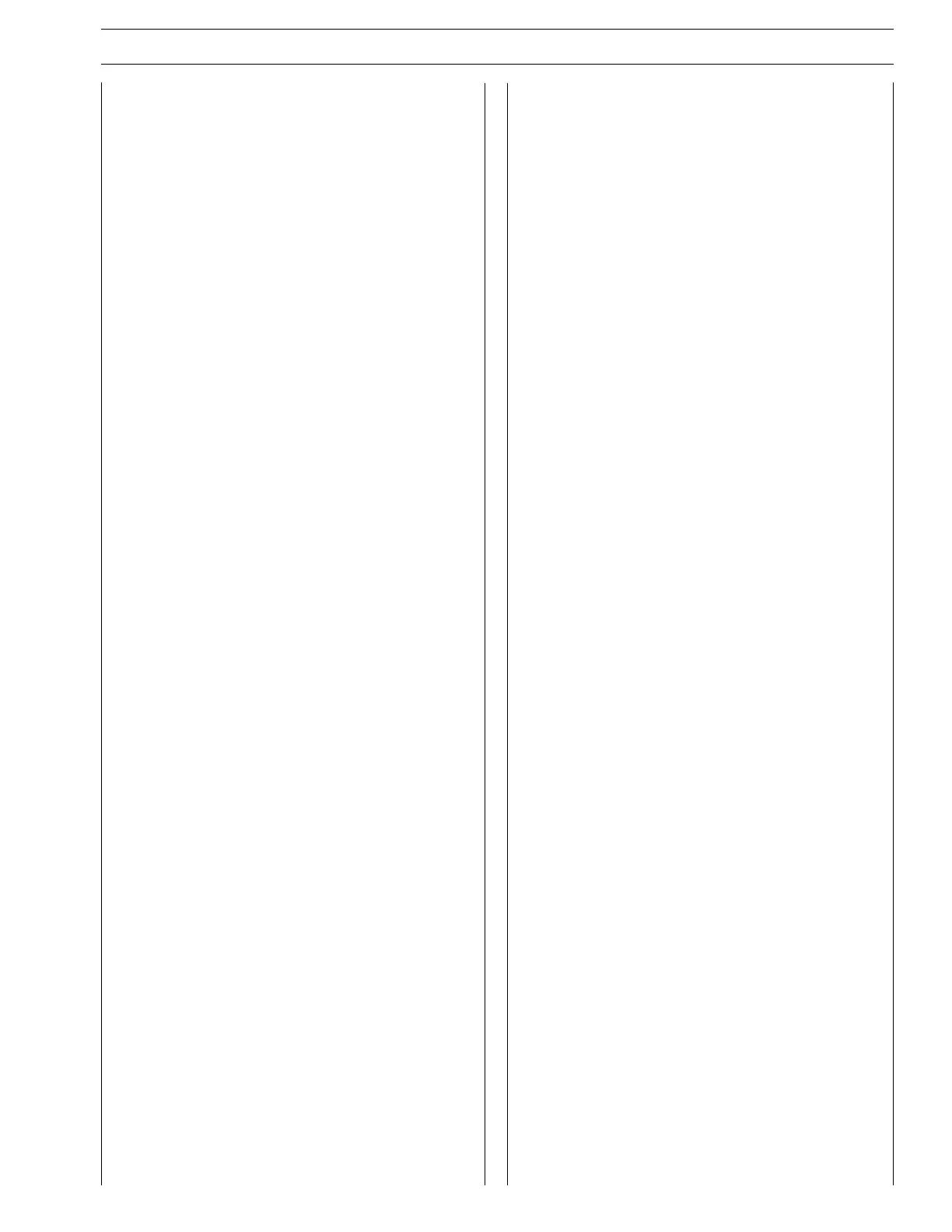We direct your attention on some precautions that must be
necessarily followed in a regular work environment and, in
case of non-compliance, any other precaution will not be suffi-
cient to protect the safety of the staff in charge of maintenance.
- Please obtain information and inform the staff on applica-
ble laws on safety, making the informative material
available for consultation.
- Please keep the rooms as clean as possible and properly
ventilated.
- Equip the rooms with specific, well-visible first-aid boxes,
always stocked up with suitable medical aids.
- Be equipped with suitable fire extinguishing devices, pro-
perly signalled and never obstructed. Check their opera-
tion on a regular basis and train the staff on the interven-
tion priorities and methods.
- Arrange gathering points for the evacuation of the rooms,
properly signalling the exit routes.
- Absolutely prohibit smoking in the areas where the works
subject to fire hazard are carried out.
- Draw the attention on prohibitions and indications with
suitable signs, which are immediately comprehensible al-
ways in case of emergency.
- Do not
erform o
erations without
he necessar
in-
structions.
- Do not use equipment to perform works other than tho-
se for which they have been designed, you may sustain ac-
cidents, even of serious type.
- In case of checks or calibrations that require the engine
to be on, make sure that the room is properly ventilated
and use proper fans to remove exhaust gases: intoxication
and death hazard.
SAFETY REGULATIONS
Standard safety precautions
Accident prevention
- Do not wear cloths with loose edges, rings and chains,
while working near engines and moving organs.
- Use protective gloves and glasses when:
- filling up inhibitors or antifreeze;
- replacing or filling up lubricant;
- using air or liquids under pressure (allowed pressure
2bar)
- Wear a protective helmet if working in an area with sus-
pended loads or overhead systems.
- Always wear safety shoes and cloths fitted to the body,
better if equipped with rubber bands at the edges.
- Useprotectivecreamsforhands.
- Change wet clothes as soon as possible.
- Inthepresenceofvoltagehigher than 48-60V, check the
effectiveness of the ground electric connections. Make
sure your hands and feet are dry and perform the work
standing on insulating platforms.
Do not proceed if not qualified!
- Do not smoke or spark free flames near batteries and any
combustible material.
- Return oily rags or solvents to fire-proof containers.
During maintenance
- Never open the filling cap of the cooling circuit when the
engine is hot. The operating pressure will spill the high
temperature liquid with serious risk of burns. Wait until
the temperature drops below 50 ˚C.
- Never add coolant to an overheated engine and only use
appropriate fluids.
- Always operate with engine off: in case particular circum-
stances require maintenance interventions with the engi-
ne on, consider all the risks involved in these operations.
- Use adequate and safe containers for draining the engine
fluids and exhaust oil.
- Keep the engine clean from oil, diesel and/or chemical sol-
vents.
- The use of solvents or detergents during maintenance
may develop toxic vapours. Always ventilate the work
rooms. Use safety masks when required.
- Do not leave cloths soaked with flammable substances
near the engine.
- When starting up the engine after a repair operation, ar-
range for suitable measures to stop air suction in case of
over-revving.
- Do not use quick screwers.
- Do not disconnect the batteries whilst the engine is run-
ning.
- Before any interventions involving the electrical circuits,
disconnect the batteries.
- Disconnect the batteries from the on-board network
while charging.
- After each intervention, make sure the polarity of the bat-
tery’s terminals is respected and the latter are well tighte-
ned and protected against accidental short circuits and
oxidation phenomena.
- Do not disconnect and connect the electric connections
when power is on.
- Before carrying out removal operations on pipes (pneu-
matic, hydraulic or fuel pipes) check the possible presence
of fluid or air under pressure. Adopt the necessary pre-
cautions, exhausting the residual pressures or closing the
shut-off valves. Always wear suitable masks or protective
glasses. Failure to follow these rules may cause serious ac-
cidents and intoxication.
APPENDIX
3
CURSOR SERIES
Print P2D32C006 E Base - 03/2015
